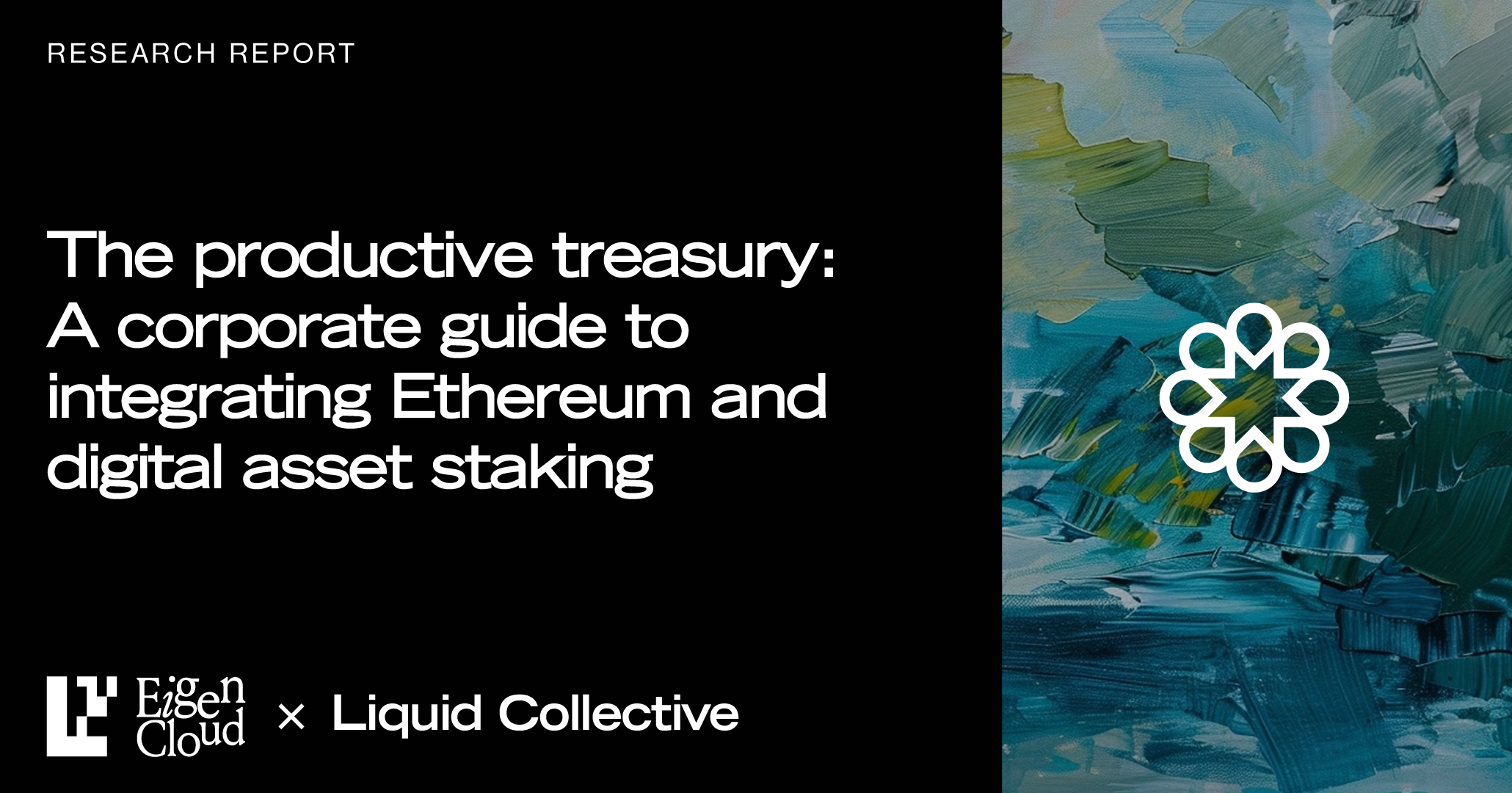Feb 14 2023
Liquid Collective is a multi-chain capable liquid staking protocol designed to meet the needs of institutions. It provides a decentralized approach to enterprise-grade liquid staking, promoting standardization and composability while also ensuring the highest levels of security and compliance.
To achieve these objectives, Liquid Collective is stewarded by an independent industry collective, with initial members including The Liquid Foundation, Alluvial, Coinbase, Figment, Staked, Bitcoin Suisse, and other web3 organizations. The protocol launched on Ethereum first with its receipt token LsETH.
How do all of these diverse industry leaders come together to build one liquid staking solution? Liquid Collective has four distinct roles, each of which will play a critical part in making the protocol operate successfully.
What are Liquid Collective Platforms?
Platforms provide a seamless on-ramp and access for users to interact with the Liquid Collective protocol. There are two types of Liquid Collective Platforms.
Platforms that enable LsETH minting and redemption: These Platforms enable direct Liquid Collective protocol interactions, including depositing ETH to Ethereum's deposit contract and redeeming LsETH for ETH (minting and redeeming). They conduct know-your-customer (KYC) and anti money laundering (AML) checks on their users, and submit approved user addresses to Liquid Collective's Allowlist. These Platforms then provide a path to deposit and withdraw staked tokens. In other words, KYC'd users who utilize a Platform's services can deposit to Liquid Collective and mint LsETH.
Platforms that enable secondary interactions: These Platforms do not enable minting, redeeming, or direct Liquid Collective protocol interactions, but do enable secondary protocol interactions such as trading, lending, or other services not required to Allowlist KYC/AML wallet addresses. Users of these Platforms can seamlessly interact with LsETH, and may accrue Ethereum's consensus and execution layer network rewards simply by holding LsETH.
All Platforms meet enterprise-grade security and compliance standards, and they may choose to integrate Liquid Collective liquid staking within their suite of product offerings. The ability to participate in Liquid Collective via a number of leading Platforms is key to Liquid Collective's composable, liquidity-focused approach. While platform-specific solutions have historically not gained traction relative to industry standards, with the stablecoin market providing an example of this, the collective offering of LsTokens across diverse Platforms can promote standardization through collective collaboration.

What are Liquid Collective Node Operators?
Node Operators run the validator infrastructure on Liquid Collective, registering validator keys with the protocol, performing validation duties, and earning network rewards for doing so. Liquid Collective does not run validator infrastructure, but instead delegates that critical task to proven Node Operators that meet the highest performance standards.
Liquid Collective's Node Operators operate multi-cloud, multi-region and multi-client infrastructure, in addition to meeting enterprise-grade security and compliance standards and abiding by Liquid Collective's Node Operator Performance SLAs. ETH staked on Liquid Collective is distributed across Node Operators in a round-robin manner, ensuring that Liquid Collective is supported by a broad and dispersed active validator set. The protocol launched with an initial set of Node Operators including Coinbase and Figment.
In addition, Oracle Operators report data from the consensus layer to the execution layer, and report to Liquid Collective's core contract on the balance of underlying staked tokens plus accrued staking rewards, minus any slashing penalties. This information informs LsETH's Conversion Rate for deposit and withdrawal, alongside supporting DeFi reporting.
What are Liquid Collective Wallet & Custody Providers?
Wallet Providers and Custody Providers offer token storage and signing infrastructure. Wallet and Custody Providers enable Platforms to easily access and distribute LsETH to their users through custody and/or embedded minting services. In some cases, Wallet & Custody Providers may be the same entities as Platforms. However, stakers have the flexibility to work with their preferred LsETH Custody Provider, as staked ETH on Liquid Collective is custodied by the core Ethereum Deposit Contract.
What are Liquid Collective Service Providers?
Service Providers provide development, consulting, attestation, legal, or technological services to the Liquid Collective. Liquid Collective seeeks to collaborate with existing web3 teams in the development of Liquid Collective's multi-chain liquid staking offering.

—Mark Forscher, CMO of Alluvial
What's Next
Liquid Collective's three primary roles—Platforms, Node Operators, Wallet & Custody Providers, and Service Providers—work together to ensure the smooth functioning of the platform and provide a seamless and secure staking experience. Each role plays a critical role in making Liquid Collective a success, and the ecosystem will continue to evolve and grow as the protocol expands.
If you're an industry enterprise interested in joining Liquid Collective as a Platform, Wallet & Custody Provider, Node Operator, or Service Provider, you can reach out to Liquid Collective to learn more.




